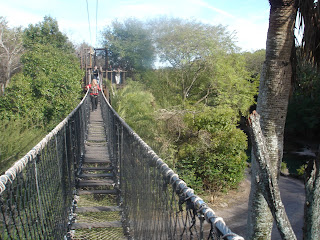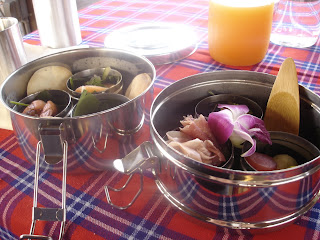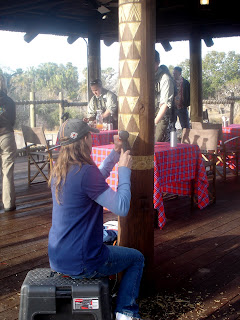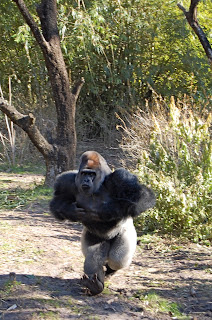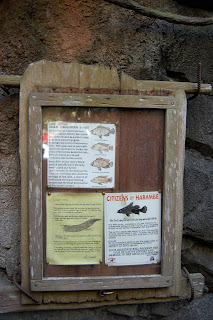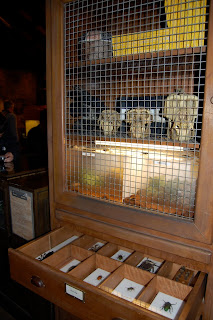
Hamjambo, everyone! Shawn was kind enough to turn his blog over to me, DisneyLaurel (his lovely wife and partner in loving all things Disney Parks), today so I could share my perspective on a new and very exciting offering at Disney’s Animal Kingdom: The Wild Africa Trek.
You’re probably wondering why, since Shawn himself has a long history with Disney’s Animal Kingdom (abbreviated as DAK from here out) that pre-dates the park’s opening. Well, from 2008 to mid-2010, I had the pleasure of being part of the DAK leadership team. As such, late last spring I was given an opportunity to get a close look at something being considered for the park - a new type of tour that would be unlike any other at Walt Disney World. Part Adventures by Disney, part animal encounter and all Disney’s Animal Kingdom. Of course, that tour concept evolved into what is today the Wild Africa Trek.
What I experienced that spring morning is pretty darn close to what you would see today, sans bridges and boma, since those were constructed later just for the trek. Although we talked about what kind of cast member would eventually lead the tours, our guide that morning was Michael Colglazier, Vice President of Disney's Animal Kingdom.
What a special time it was! The off-the-beaten-path portion started just the same as it does today, going through an up-to-now unnoticed fence in the middle of Pangani Forest. We climbed the hillside, made our way through the brush and found ourselves looking over Safi River where the hippos make their home. We had no safety vest, carabiners or other gear to keep us protected, so we stayed clear of the edges and couldn’t get the spectacular views that you can now; but it was still remarkable and something I was super excited to see come to life.
Much of our journey was filled with the kind of discussions I like to imagine have been happening throughout the 55+ year history of Disney Parks, beginning with Walt. We couldn’t physically see what the end state would be, but through the passionate descriptions of our guide, we could picture everything clearly. Being able to be part of that scene, imagining what could be - that’s the memory of a lifetime for me!
Although I’ve since moved to the other ‘Kingdom’ for work, I was invited back to DAK last week to try the trek in a near-finished state. There was still work taking place on a few elements, including the beautiful carvings at the boma, but the overall experience was "show-ready," as we say at Disney.
My favorite feature of the tour the first time around was very simple and may surprise you - the beautiful fern forest that we walked through after seeing the hippos.
It’s cliched to say, but I have a much tougher time choosing a favorite moment from the second time experiencing the trek. The bridges, the animal viewing with our own guides, the feeling of going where no guests have gone before... every moment was special. But, if I must pick one thing, it has to be our time at the boma. Being a self-proclaimed foodie (my other big passion!), hanging out on the savanna leisurely snacking on gourmet goodies of the park Chef’s design was a great way to wrap up our adventure.
I had a wonderful time on the trek and can’t recommend it enough. Some members of the online community also had a chance to try it out last week, so give their pages a read or check out their podcasts for their point of view. Me personally, I will always remember it as the Disney experience I got to see from before the beginning.





